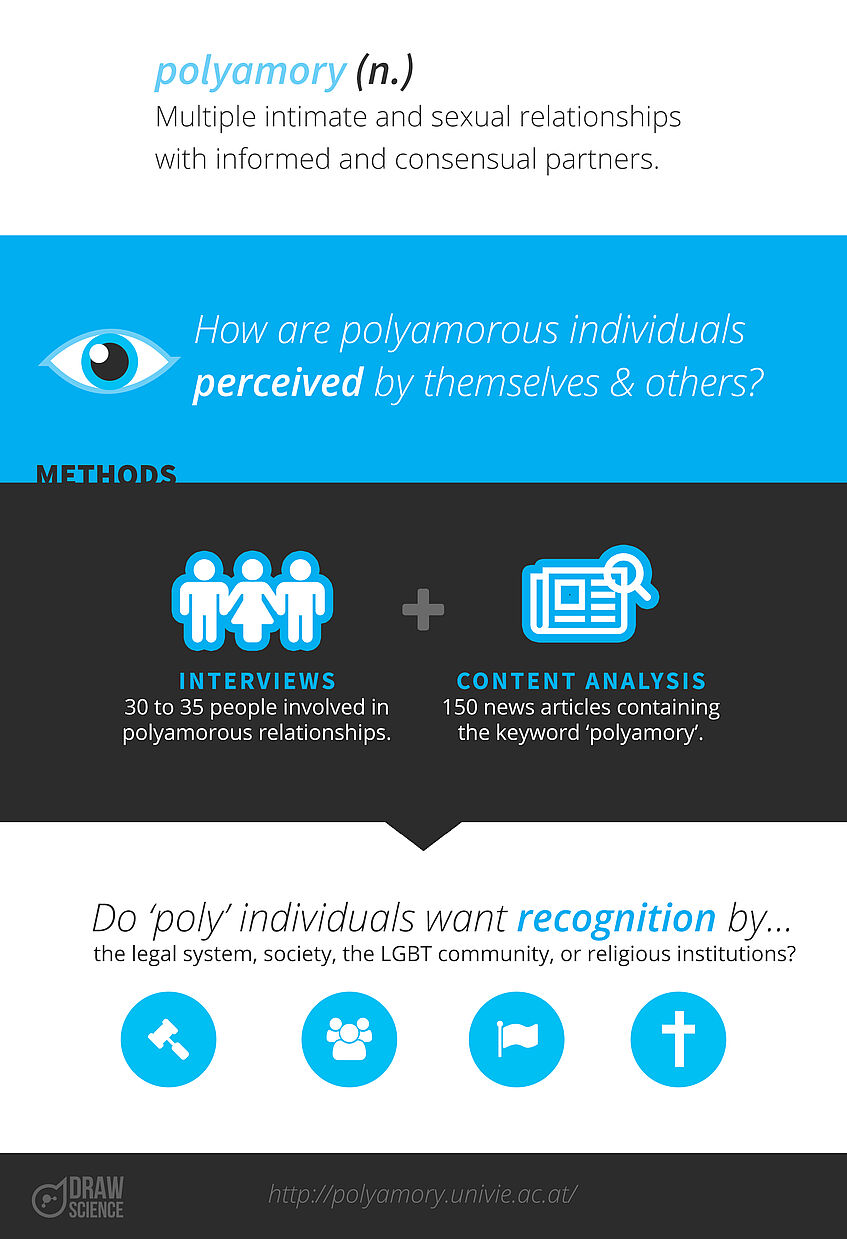Goal of project
Content of research project: “Father-mother-child”. What some of us reminds on a childhood game is a specific version of relationship and society norm that has within the last 50 years been and still is subject of significant change. Same-sex relationships have slowly but constantly been accepted. In addition, further forms of sexual orientation and gender identity (bi and transgender) gained public visibility and acceptance. What these concepts/identities (subsumed by the acronym “LGBT”) have in common (along with so called “straight” people) are relationship characteristics: Sexuality and emotional love is only shared with one specific person. About 15 years ago an additional term hit the academic stage: Polyamory – multiple intimate and sexual relationships with informed and consensual partners.
Hypothesis: What so far have not sufficiently been asked within the community are questions on self-perception (is being poly a form of sexual orientation, a form of identity, or an intimate practice, or something completely different?); what did happen in ones emotional and sexual history that he/she claims to be polyamorous; how does the social environment (family, friends, work colleagues) react on that kind of relationships; is there a demand for legal recognition in form of registered partnerships or marriage (relevant for example for founding families, insurance issues, pension schemes, inheritance law, etc.), and is recognition by religious institutions an issue? What moreover will be investigated is how the media illustrates those aspects and therefore creates opinion for the wider public, leading to the key question if the inside view matches or clashes with the media representation.
Methods: Regional focus of the research project is Austria. In a first step, 30 to 35 people who live in polyamorous relationships, with their primary relationship partners living in and around Vienna will be questioned (by a method called “narrative autobiographical interviews”). In a second step, about 150 newspaper and magazine articles published since 2007 (representing about a third of all articles) that contain the keyword polyamory will be categorised and interpreted by a method called “qualitative content analyses”. The two outcomes will at the end be compared.
What’s new and special: Until now, international research focus is the Anglo-American region; hardly any surveys have so far been conducted in and focussed on the German speaking area. The demand of recognition by a religious institution has up to now not been asked, and also queries on demands of legal rights are rare. The question of being poly as a sexual orientation has yet not been posed to the community, and an outcome in favour could fuel a discussion far beyond the academic discourse: Does the LGBT-acronym needs the expansion “P” for polyamorous living people?

